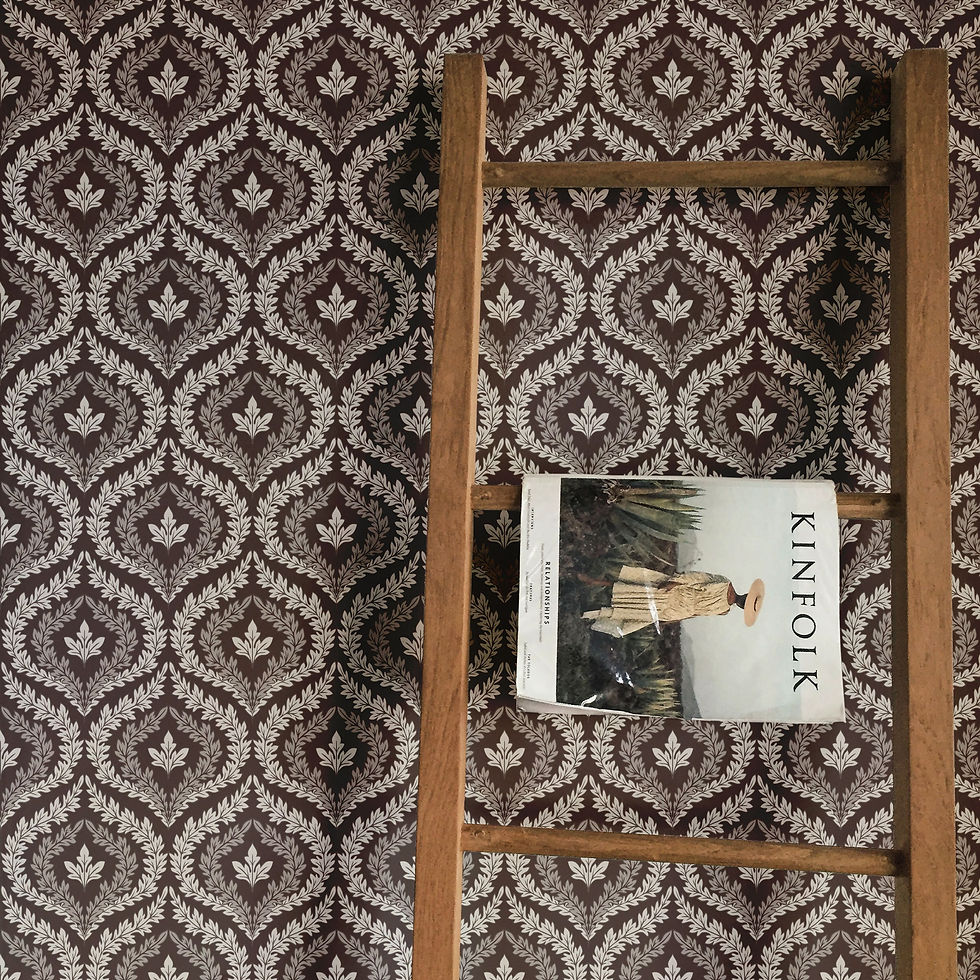Why Artwork Licensing Fees Range from $250 to $2,000 (and What You Get for your money)
- Lisa

- Sep 16, 2025
- 7 min read
Why does artwork licensing cost anywhere from a few hundred to a couple thousand dollars—and why do some businesses turn to AI art instead? That's probably what you're asking yourself, and it's a great question to think about and understand. That's a big cost range, and if you don't understand what goes into artwork licensing fees, you may be tempted to grab the lowest price tag you find and run with it.
My goal is to walk you through all the factors that go into an art licensing price and show you what you get for your money so you're making the right choice for your business and brand. In this article, I’ll break down the real costs of licensing artwork, what you get for your budget, and why AI art—though cheaper—may not be the best choice for your business. Making a confident choice and understanding the value will give you confidence in your business decisions.
What Affects Artwork Licensing Fees
There are a lot of factors that go into an art licensing fee. Can the artwork be used on other products at the same time? How much product will you be producing with the artwork and what will it be put on? Where will you sell your products, and for how long?
On top of these factors, the artist's reputation and demand figures in as well. Artist recognition comes at a price as they only have so much time to create and sell their art.
And there are different ways of paying licensing fees that also have to be discussed. You'll need to know whether you're wanting to pay a flat fee or a royalty on products sold. It comes down to figuring out what you envision for your product--it has to make sense for both you and the artist.
But before we dive into these factors individually, let's also address the elephant in the room: AI-generated art.
The AI Artwork Option: Why it Costs Less (and Comes with Risks)
Etsy and other marketplaces are rife with AI artwork options, and they can be so tempting. Often they come in big bundles for very little money, and when you're a business trying to watch your expenses it seems like a great option. All it takes is a few clicks of your mouse and you're the proud owner of AI art for pennies on the dollar of what artists charge.
It sounds really great, but why is it so cheap, and what are the associated risks? There has to be a catch, right? (Hint: yes, and it's a big one.)
It's cheaper for several reasons including the fact that there's no artist labor, it's quick to generate, and it can be the fastest way to get artwork for your products. It's also cheap because the quality just isn't there (we've all seen faces with extra eyes, weird blobs that don't make sense, and other AI inconsistencies). But what does it mean for your business even if you find a "good" one?
Legal Considerations. AI art is trained on existing artwork, and cannot be copyrighted under current US or EU laws. Meaning you don't own the artwork, and anyone can use it. Your direct competitor, they can swipe it right from your product and you don't have any rights to protect it. And what if the AI model serves you something dangerously close to artwork that IS copyrighted? You've now opened yourself up for legal action, and no business wants that risk.
Ethical Considerations. These days, businesses need to be very careful about the ethics behind their decisions, as it seems like consumers are more and more particular about who they will shop from. Muddying the ethical waters is risky business. With businesses championing living wages and environmental considerations, consumers want to know who they're doing business with and what you stand for. AI art can be seen as inauthentic and fake, which could undo all of the messaging you have spent time and money carefully creating. It is also void of the ability to connect. It devalues and drives out real artists who put their hearts into creating art that connects on a human level.
Quality Considerations. AI does a lot of things well, but quality isn't one of them. Beyond weird distortions and incongruities, AI art is missing the heart and soul your business both needs and deserves. Because you're not selling to robots, you're selling your products to humans who want and need connection. And you're simply not going to get it with AI art.
AI art might be a shortcut or helpful for mockups, inspiration, or concepting, but it's rarely a safe or smart choice for commercial products or worth risking your brand's reputation. AI art may be in the $0–$50 range, but if offers no protection and no ownership.
Now let's get back to those licensing tiers, and what you can expect at each level.
Licensing Tiers
While every artist has their own pricing, we can generally break it down into three tiers to give you an idea of what you might expect for each level of licensing. Of course, this will depend on what you agree to together.
Tier 1: $250–$500
In this bottom tier, you might expect to find non-exclusive licenses with shorter contract durations and single-product use. For example, a small gift business testing how a product will do may want to negotiate a non-exclusive license for one year for stationery only. The price will be lower, as will what you can do with it, but it's a lower barrier of entry. The nice thing is that you can test out your product, and renegotiate after the year for additional time or exclusivity. Seasonal product or packaging use may also be a good fit for this tier. At this level, you're getting affordable access, but limited uniqueness.
Tier 2: $500–$1,000
This middle tier brings broader rights, maybe multiple pieces of art, and could bring exclusive rights for certain territories or industries. For example, a wallpaper company may want a collection of prints. They may want these prints to be exclusive to the wallpaper industry, and to license them for 2-3 years. This gives them multiple SKUs to work with, a cohesive look and feel as they came from the same artist, and exclusivity for wallpaper (although it could be licensed in other industries). This may be ideal for small to mid-sized brands expanding distribution and looking for uniqueness. At this level, you're getting more flexibility and brand security.
Tier 3: $1,000–$2,000+
This top tier brings the most benefits to you as a brand, especially if you're trying to build a culture of uniqueness, exclusivity, and connection. This tier often includes exclusive right for longer durations, ensuring that no competitors can use the same art, often in any industry. These licenses are often true collaborations where you may work together to develop a design that is custom tailored to your brand's aesthetic. Custom changes, colors, and being able to use the print for multiple product SKUs and categories may be part of the deal as well. For example, a luxury brand may license a design in perpetuity for all industries and worldwide, making sure that they are the only brand that can use this design. They may be able to use it on perfume packaging, scarves, and handbags. At this level, you're getting true exclusivity and the strongest brand protection. You may also be getting work tailored to your brand in a way you couldn't get picking from a library of prints.
Royalties: 3-20% of gross sales
And let's not forget about royalties, as this is another common way to license artwork. This is a broad percentage range, and part of that has to do with industry standards, so find out what's common in your industry and what your profit margins can handle. For example, bolt fabric companies often choose royalty-based licenses with a percentage based on how many yards of fabric are sold. It can be a lot to track all those SKUs though. Royalties are based on sales, so if you don't have a system set up to track sales and percentages as well as monthly reporting, you may find a flat fee more enticing. Often small businesses start with flat fees and grow into royalties as their systems and businesses grow in complexity.
I have licenses at both ends of the royalty range as well as flat fee licenses in different tiers. As an artist, I know which companies get first dibs on my newest and and best work. They're the ones who value the artists they work with monetarily, in communication, and in artist credit. (Hint: treat the artists you work with well--it's worth it to get first access to the best artwork for your product!)
How to Choose the Right Level for Your Brand
Several times throughout this article, I used examples to help guide what I see in my licensing deals. Choosing the right level for your brand takes into account your systems, level of commitment, and budget.
For startups and small businesses, Tiers 1 or 2 offer greater affordability with more limited applications, territories, and industries. Tier 3 is often preferable to businesses who are trying to protect their brand identity, build their product lines with longevity, and who are looking for true connection with their customers.
Also remember that licensing contracts are a negotiation. Be up front about what you would like from a license, then be open to working with the artist to find middle ground that works for both of you.
No matter which tier though, licensing is safer for your brand than AI. If you find yourself tempted to go the AI route, stop and ask yourself—is saving a few hundred worth risking your product’s credibility or legal standing?
Artwork licensing is about more than artwork and products. Licensing is an investment in trust, ownership, and exclusivity.
It's about valuing your brand's offering and the artist's skill. I offer flexible licensing options—from $250 non-exclusive agreements to $2,000+ exclusives—so you can choose the level that fits your product and budget. Click the link above to start a conversation about how I can help you find the best artwork for your brand.








































Comments